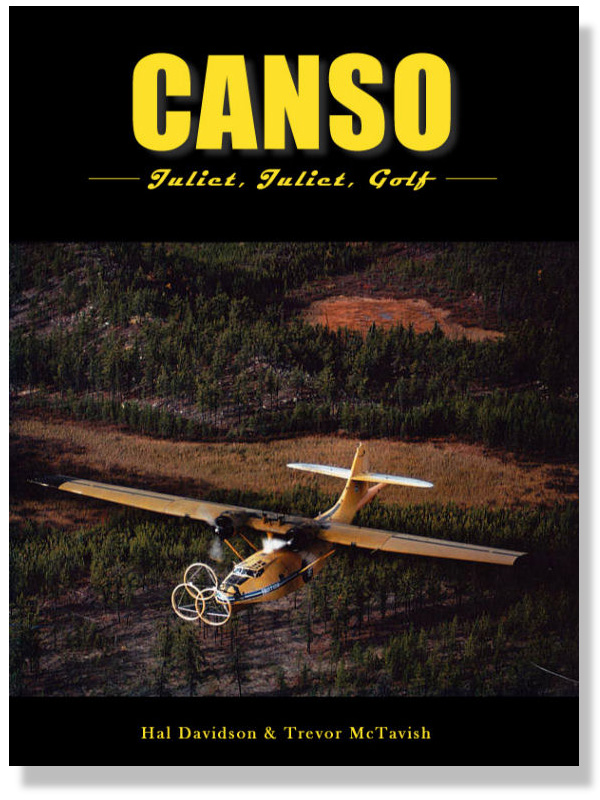

There are several characteristics that make a certain airplane an ideal choice for survey. Among them are stability, a large cabin, as well as range and endurance. Naturally, when doing
high altitude photography pressurization and service ceiling are factors, but when buzzing over the treetops measuring the Earth's magnetic field a different airplane, one needing neither
speed nor pressurization comes to the forefront. Rather, it's the ability to carry some very heavy equipment. For almost 40 years the ideal choice for many companies was the lumbering
Consolidated PBY-5A Canso.
Developed as a long-range naval patrol bomber and search and rescue platform the PBY (Patrol Bomber – Consolidated Aircraft) first flew in 1935. Had it not been for World War 2 it would
have been obsolete by 1940, however, with hostilities production of the PBY-5 Catalina (aka: Canso) and amphibious PBY-5A (Canso A) increased until more than 4,000 examples were built.
After the war numerous PBYs were converted into airliners, freighters, water bombers and surveyors. In fact, it appears that somewhere around two dozen PBYs were used by Canadian, American
and Australian survey companies through the years.
PBY-5A, construction number 1785, rolled out the doors at the Consolidated Aircraft factory bound for service with the US Navy. When it was deemed surplus, she entered the American civil
register as N4002A before purchased by Ottawa's Survair in 1965, where she was registered CF-JJG and christened "Explorer One". Soon, she'd pass to three other Ontario based survey
companies; Canadian Aero Service, Spartan Air Services Ltd. and Kenting Earth Sciences. Once at Kenting 'JJG would undergo a dramatic transformation to convert her into one of the most
potent survey machines in Canada.
For years, airplanes of various types had been used to detect variations in the Earth's magnetic field. From the airplane a strong electro-magnetic signal would be directed downwards and
into the ground. It would bounce back at a speed dependant on the material it was passing through. If the signal passed through a denser layer of rock, like a mineral deposit the change in
signal strength would appear on the recorders. On older planes this usually meant towing a bomb-shaped "bird" on a long wire in order to capture the returning signals but on 'JJG the whole
affair was not only enlarged but it would remain attached to the plane, preventing the bird from accidentally snagging in the trees. The transmitters' size would increase the system's
sensitivity and make it far more accurate.
Work on 'JJG began shortly after her arrival in Uplands in 1976. After seeing their young apprentice fixing his boss's fiberglass boat, Kenting set Hal Davidson to work making the new
antenna rings. Each of the transmitter rings was made out of three eight-foot loops of aluminum wire that were encased in airfoil shaped "Styrofoam jig-saw puzzle" wrapped in fiberglass
cloth and epoxy resin that resulted in the appearance of a hockey stick handle.
Once dry, the interlocking transmitters were attached to an aluminum tube truss and bolted to the Canso's nose. To keep it electrically isolated from the rest of the airplane the whole
apparatus was mounted on blocks made of Bakelite and Micarta. Three smaller receiver loops were installed inside a fiberglass "stinger" pointing out the tail and a 16mm tracking camera was
located in the belly (since she'd never be landed on the water, this non-water tight modification wasn't a big deal). On the ground it was all pretty flimsy but as the Canso started moving
the antennas began flying on their own and by 90mph the apparatus was as solid as a rock.
After the initial trials were over 'JJG set to work, looking for uranium and other radioactive elements in Northern Ontario.
Being such a big airplane meant the plane was "super stable" but it also afforded the crew luxuries unheard of in smaller planes. "We kept the hot plate and coffee maker," Davidson
explained, "and the toilet." And because of the PBY's incredible endurance, they'd stay airborne all day, sometimes taking a second crew aloft and going for as many as 10 hours at a time;
when you're getting paid by the mile that translated into a serious boost to the crew's pay cheques. When the weather started cooling off and Davidson had to deice the massive plane her
size came (surprisingly) to his aid. Onboard they'd carry a water heater like you'd find in a cottage or cabin and they'd plug it in somewhere on the airport every night. In the early
morning there would be gallons of heated water/glycol ready to be sprayed on the plane via an electric pump and 200 feet of garden hose.
During one trip the plane's logbooks were confiscated by a Nebraska sheriff and the crew was ordered to appear in court. They knew right away why they'd been summoned. Deviating from the
assigned track was not something any crew wanted to do and in Northern Ontario there's almost no one to bother with your low flying. However, on this particular day, they watched as they
roared directly over a farm, spooking a horse that had just been had lashed up to a wagon full of produce. The horse bolted and the vegetables scattered. The solution was simple; the crew
kept flying with a new logbook while Kenting's lawyers convinced the farmer to drop the charges in exchange for a new pickup truck. It was expensive but it was far cheaper than taking a
delay in the flying.
In the years that followed, 'JJG continued her search for hidden resources with other crews. By the mid-1980s however, Kenting was disappearing and big Cansos were being replaced with
smaller airplanes with even more sensitive equipment. In 1986 'JJG was sold back into the United States to begin another adventure.
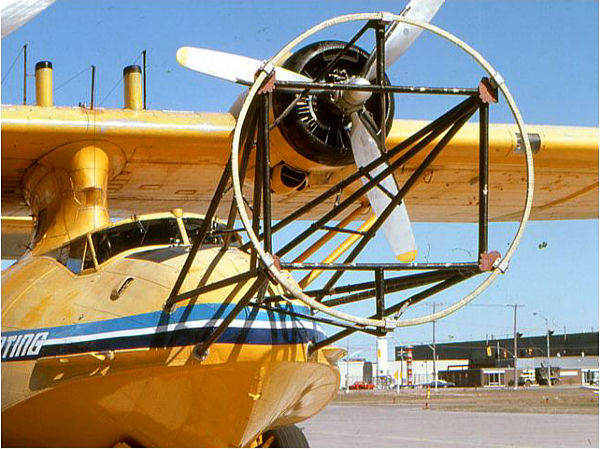
The three massive transmitting rings attached to CF-JJG's fuselage with a sturdy aluminum-tube truss, seen here before mounting the transmitters. (Field Aviation Ltd.)
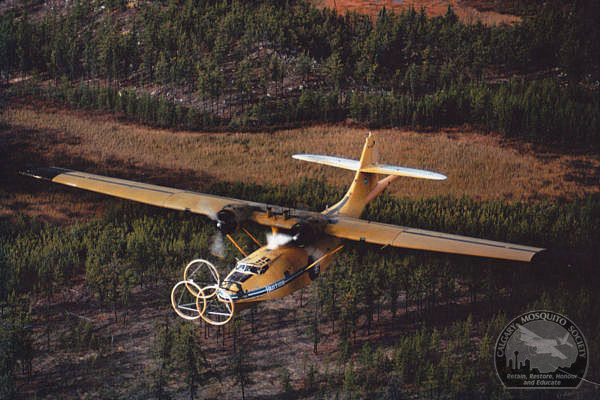
Flying the Canso 300 feet above the ground and on a tight quarter-mile grid was hard work for the pilots. In order to keep the turns at the end of the legs as small as possible, the pilots
would start by rolling the airplane in the opposite direction, then reversing the roll with the control yoke all the way over in the direction of the turn. Finally, both the captain and
copilot would push on the rudder pedal with both of their feet. Engineer Hal Davidson was really impressed that 'JJG's captain, Pat Corpat (a wartime Mustang driver), was able to stuff a
pipe full of tobacco, light it and smoke it, all without taking his hand off the Canso's controls or missing a beat in the tight-tolerance flight path. (Hal Davidson)
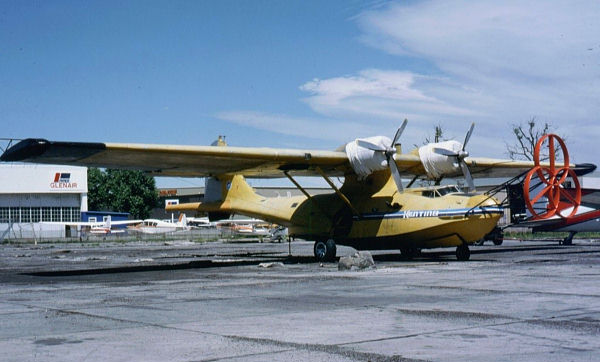
Delays in getting a properly, professionally finished set of rings made meant that 'JJG set off to work with the prototype rings Davidsonhad built. It would be two or three years before the
production ones finally arrived. When they did, they were nice and smooth and easily identified by their bright red paint. Here 'JJG is seen during a stop over in Calgary, AB where Kenting
had a small regional office. (Keith Sowter)
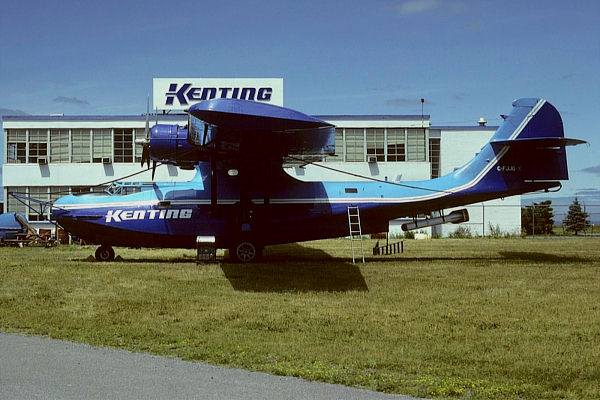
Sometime in the 1980s 'JJG traded her highly visible yellow paint for a more subdued two-tone blue scheme. Besides the blue paint the bomb-shaped "bird" below the rear fuselage indicates
this photo was taken towards the end of her survey career. Since its expensive to paint a plane as big as a Canso she remained in her blue paint until well after she'd been sold into the
USA and was flying as N423RS. (Gary Vincent)
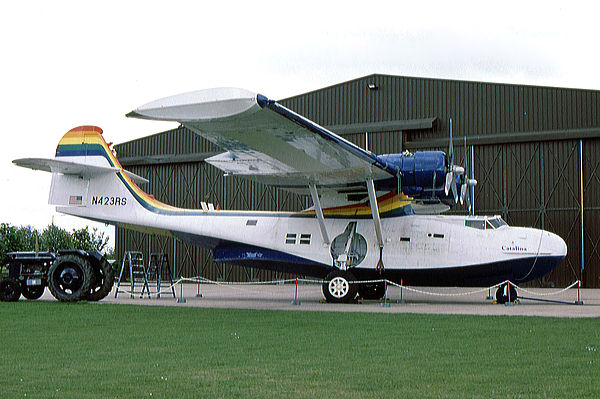
Replaced by smaller, more economical aircraft C-FJJG was sold to American Red Stevenson in 1986 who then incorporated his initials into the registration N423RS. Ownership jumped between a
couple Americans although N423RS was based in England for a brief association with Greenpeace for whom she had an eye-catching rainbow colour scheme applied. (Derek Heley)
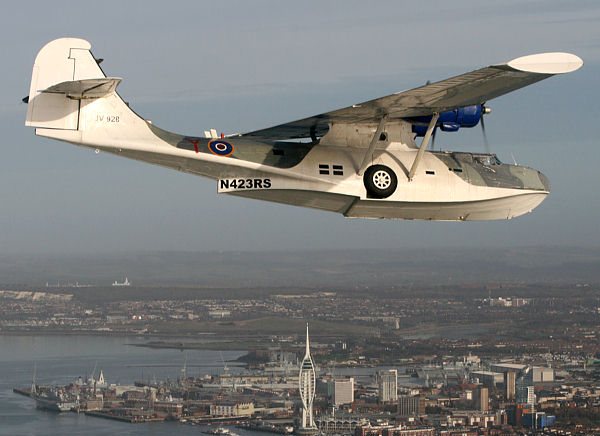
With her Greenpeace days behind her N423RS sat for almost seven years at Lee-on-Solent.
N423RS is now back in the USA. Mike Perkin captured her flying in RAF Coastal Command colours.
(Mike Perkin)
References:
Consolidated PBY Catalina, The Peacetime Record, David Legg, 2002.
Hal Davidson interview, August 2011.